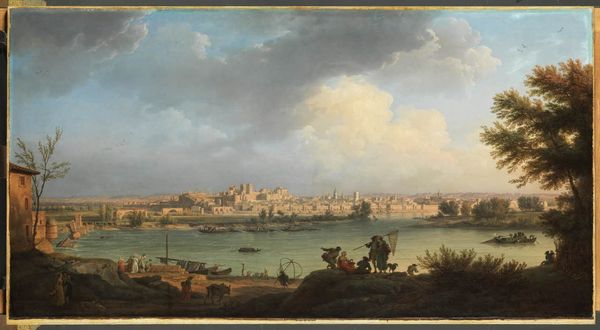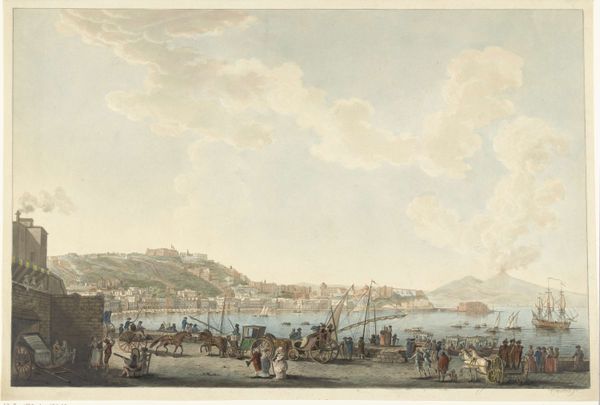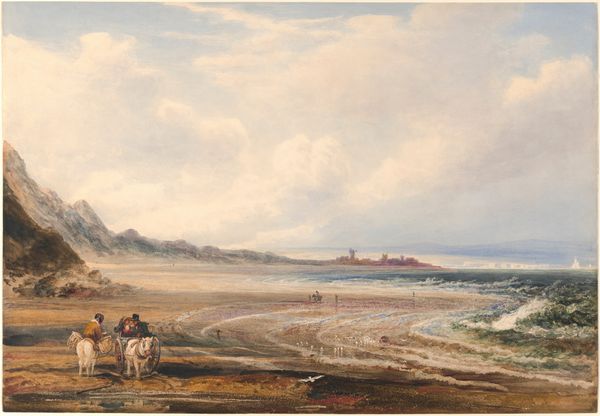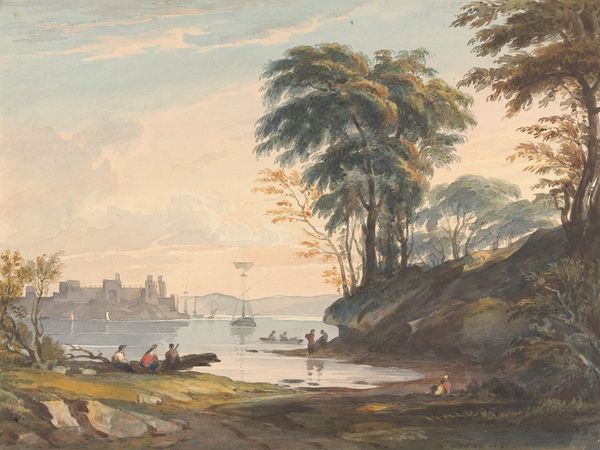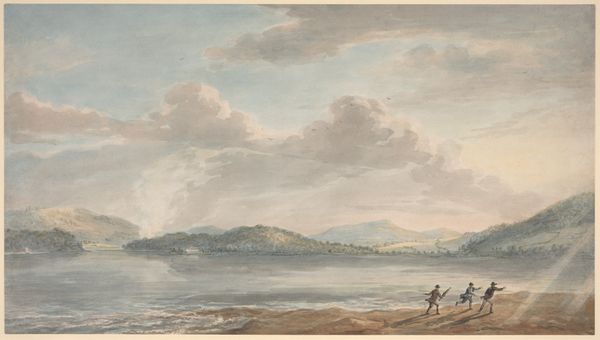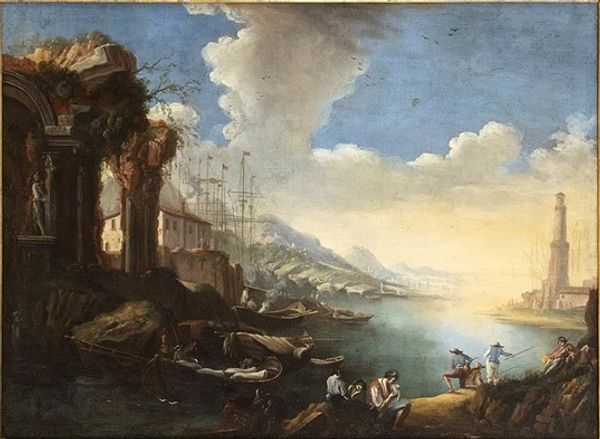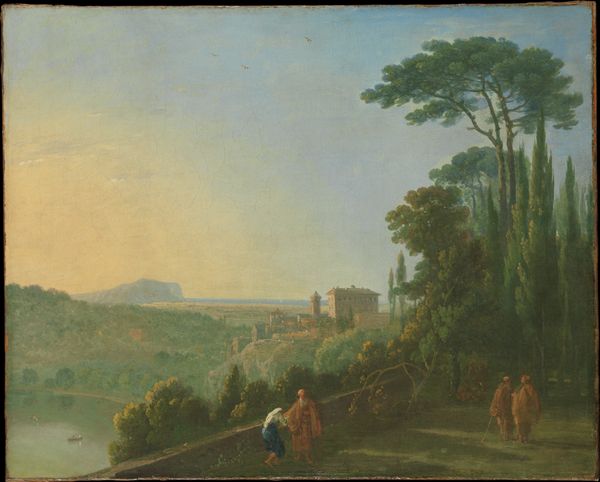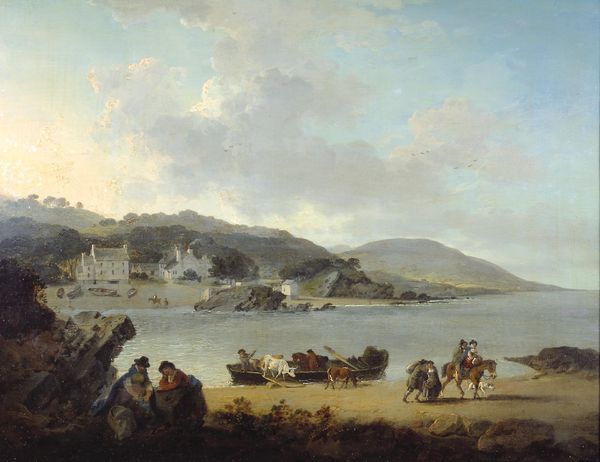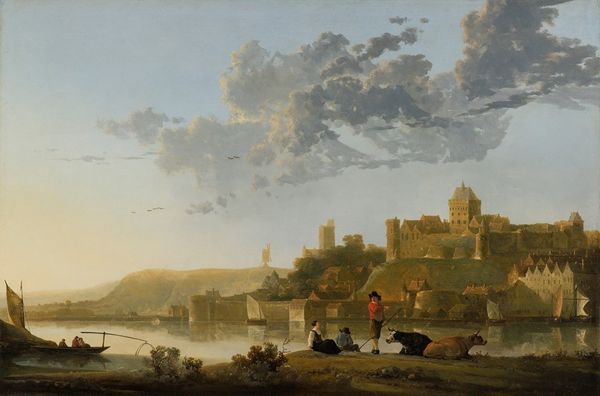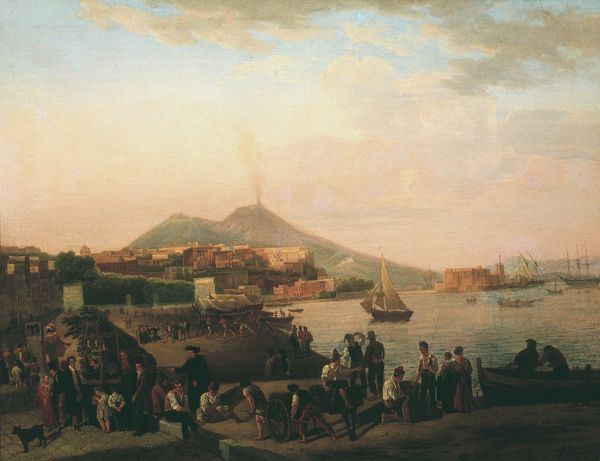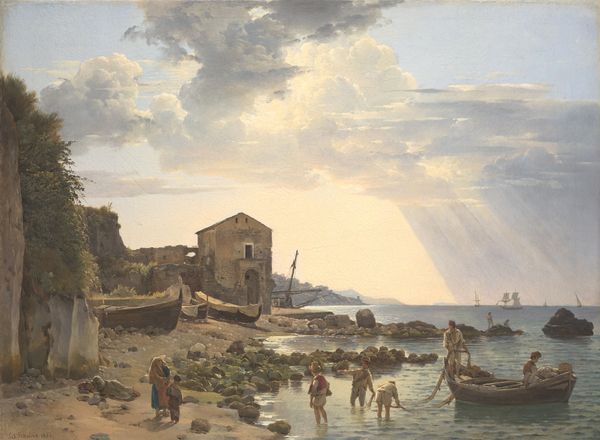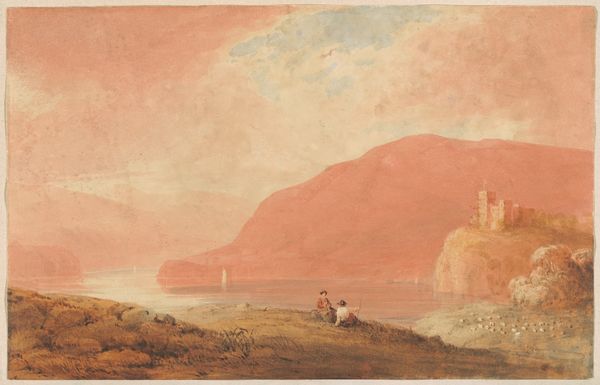
painting, oil-paint
#
baroque
#
painting
#
oil-paint
#
landscape
#
cityscape
#
history-painting
#
realism
#
sea
Dimensions: 99 x 197 cm
Copyright: Public domain
Curator: Claude-Joseph Vernet's "Vue de Naples avec le Vésuve," painted in 1748, offers a compelling lens through which to examine 18th-century European landscape painting and its engagement with social realities. Editor: Okay, immediately, this painting makes me feel...peaceful, almost deceptively so. The light is gorgeous, bathing everything in this warm, golden glow. But there's also something a little unsettling about it, that looming volcano in the background like a constant, quiet threat. Curator: Absolutely, that contrast is key. Vernet wasn't merely painting a pretty picture. He was presenting Naples as a nexus of natural beauty, commercial activity, and, indeed, latent danger. We can analyze this piece through the lens of class, noting how the foreground depicts both wealthy individuals in leisure and laborers engaged in the port's daily operations. Editor: Yes! The ordinary existence of the figures is so perfectly posed against that potentially fiery and catastrophic future; I also see how he’s crafted almost a stage here; he leads our eyes quite strategically from one act, one figure, one shape to another… Curator: Precisely. The placement of figures isn’t arbitrary. Vernet is crafting a narrative about Naples, about labor, leisure, and the omnipresent power of nature, filtered, of course, through the perspective of a privileged European artist. Editor: And Vesuvius! It is this constant symbol throughout so much of Neapolitan art that speaks to the complicated existence, which this work reflects with a golden touch! It’s this understanding of life’s delicate beauty mixed with utter destruction lurking nearby. Curator: Indeed, examining the composition also calls into question landscape painting as a tool for colonial and class-based power dynamics, highlighting whose perspectives and experiences are privileged. Whose stories go untold in this "view" of Naples? Editor: It gives you pause for thought… For me it sparks this really vivid question in my own existence! The same sky is here, the volcano's edge can still loom - where am I looking? Where am I choosing to sit? It is more than meets the eye and evokes all the senses to the present! Curator: I agree - that's the potency and importance of analyzing art through an intersectional lens: It opens up these dialogues about the social contexts from which art arises and enables these meaningful connections to today's world! Editor: Beautifully shared. Thank you.
Comments
No comments
Be the first to comment and join the conversation on the ultimate creative platform.
